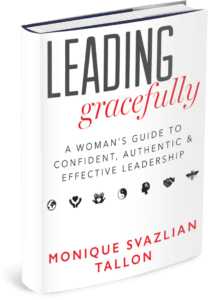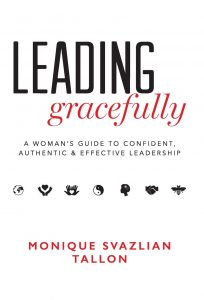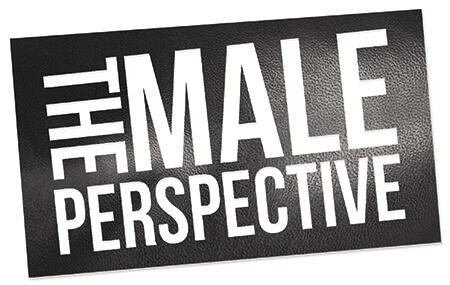5 Ways to Stop Being a Perfectionist: How to Let Go of the Need to Be Perfect
“Perfectionism is the voice of the oppressor, the enemy of the people. It will keep you cramped and insane your whole life.” – Anne Lamott
Have you ever asked yourself “am I a perfectionist”?
If you’re wondering whether or not you’re a perfectionist, there’s a pretty good chance that you are. And if we’re being honest here, there’s also a good chance you have some investment in the identity of being a perfectionist because of the positive connotations of the word “perfect”—who doesn’t want to be perfect?
What is Perfectionism?
Perfectionism, in psychology, is a broad personality style characterized by a person’s concern with striving for flawlessness and perfection and is accompanied by critical self-evaluations and concerns regarding others’ evaluations.
It’s the exact feeling we get when we expect things of ourselves that we would never expect from others. It’s working ourselves to exhaustion in hopes that we’ll feel whole, complete, worthy. It’s basing our self-worth on external accomplishments, feeling like we have something to prove all the time. It’s piling on the emotions of guilt, burnout, and self-hate. It’s always coloring inside the lines and giving ourselves the metaphorical whip if we screw up.
Perfectionism lives and breathes in our fear of making a mistake. When we are afraid of what might happen, we don’t always make the best possible choices.
What perfectionism is not?
Perfectionism is not the same as self-improvement or wanting to be your best. Perfectionism is about managing your reputation where you are constantly motivated by the desire to please others rather than yourself.
Why perfectionism makes you less than perfect:
You are in danger of being a tweaker and not an innovator. If you always have to have it perfect, be perfect, be ready, your vision as a leader becomes narrow. You may find yourself refining the same territory rather than introducing anything new. You create a climate of fear in your organization, and fear stifles innovation. Your people become afraid to take risks for fear of making mistakes because their efforts might be viewed as failures, and they won’t ask for help because they are afraid you might perceive it as a weakness.
No one can relate to you. Sad to say, but it’s near impossible to gain someone’s loyalty and trust if they cannot relate to you as a human being. Think of the character “House” from the hit TV show. He’s a genius but his abrasive, brutish manner is not one that inspires trust and loyalty. And great leaders know the value of both.
Specially for that purpose, for showing new leaders a path to effective leadership and how to let go of being perfect, I have written the book “Leading Gracefully–A Woman’s Guide to Confident, Authentic and Effective Leadership.” In the book, I feature exercises that you can use immediately to begin owning your strengths and letting go of the need to be perfect.
What problems can perfectionism arise?
- Anxiety
- Lack of self-acceptance
- Intrusive thoughts
- Obsessive-compulsive disorder (OCD)
“The real secret to a fabulous life is to live imperfectly with great delight.”
So how to let go of perfectionism?
Here are 5 ways to let go of a need to be perfect
#1 Make peace with the “now” before you feel satisfied with the “later.”
We can’t feel totally satisfied with where we’re going until we can accept, acknowledge, and appreciate where we are. Practice gratitude. Gratitude is the grounding force of inner peace. We all have something to be grateful for every single day, and if we don’t think we do, then that is the first sign that we are sacrificing our own inner peace for an ideal that doesn’t exist.
#2 Build self-reliance/self-confidence
It is an open secret that none of us is born with self-reliance, we gain it through trials and errors while we go through life making our own decisions. We gain it through life’s tough experiences. I personally started to build and develop confidence when I decided to think for myself and move forward with my decisions. And I started to feel that the more I trusted my decisions the less I needed the approval of others. People who act with self-reliance feel more in control of their environment, and feeling this way is an important ingredient of wellbeing.
One of the main factors of building self-confidence is the ability to know how to beat the inner bully. This is the inner critic that keeps us from moving to where we are eager to go. The more we develop our strength and confidence, the more we are capable of shutting that bully down.
#3 Learn to celebrate your failures
Trying and failing at something is no fun. It can make us feel upset, disappointed, and sometimes even angry. The problem with this reaction to failure is that it shuts us down and makes us not want to try anymore. However, on the other hand, if we can learn to celebrate our failures as steps toward an eventual goal, we will continue to put in effort, keep trying, and eventually achieve the results we desired for so long. We’re talking here about resilience and perseverance.
Here are a few steps you can take to get there:
STEP 1: Recognize that resilience and perseverance are qualities you’d like to develop further.
STEP 2: Be aware of what your current reaction to “failure” is. This is great info to have so that you can create a plan that will eliminate your negative behaviors and replace them with a more resilient outcome.
STEP 3: Decide how you’d like to react instead.
STEP 4: Decide on a set of inspiring quotes or mantras that you can employ if you’re unable to stop the negative behavior.
STEP 5: Don’t forget to give yourself some props when you make progress.
STEP 6: Last but not least, learn to see the silver lining behind every “failure.” Challenges make us work harder, learn more, become stronger, powerful and stretch our capacities—that’s all really great stuff. When we can experience a bump in the road and actually celebrate it, we know we’re on track to doing great things.
#4 Change your mindset
Our mindset contains our ideas and views about life, our previous experiences and perceptions of the world. How we look at the world affects our experience in it. Our beliefs then create our reality and whatever we focus on is what we manifest. Creating a good-enough mindset that isn’t filled with unrealistic expectations will help you cultivate a sense of wellbeing.
#5 Learn to let go
Holding on to pain doesn’t fix anything, ever. Replaying the past over and over again doesn’t change it, and wishing things were different doesn’t make it so. In some cases, especially when it comes to the past, all you can do is accept whatever it is you’re holding on to and then let it go. You need to let it flow all over your body, live there and then you CAN let it go with ease. Letting go should be a ceremony, a release… That’s how everything changes. You have to let go of what is hurting you, even if it feels almost impossible. Deciding to hold on to the past will hold you back from creating a strong sense of self — a self that isn’t defined by your past, but rather by who you want to be.
In a nutshell!
Just know that habits take time. But the work is definitely worth it. Letting go of your perfectionism allows you to be truly perfect at one thing that IS attainable – being a perfectly imperfect human being.

























